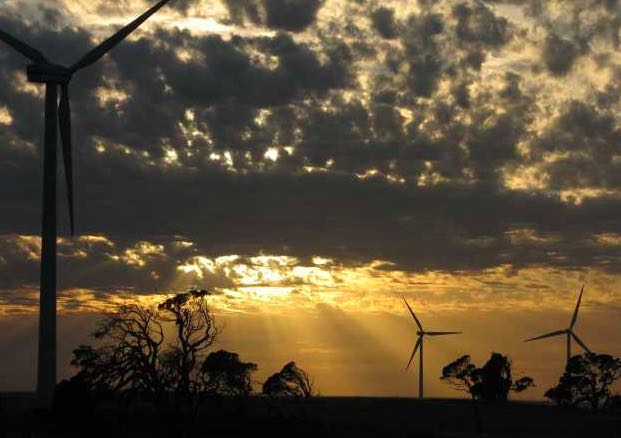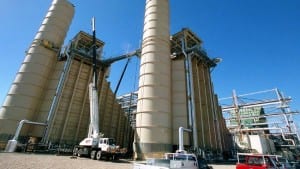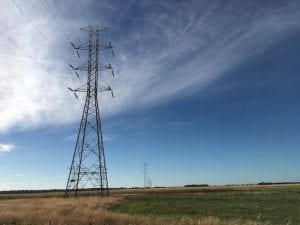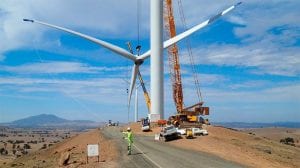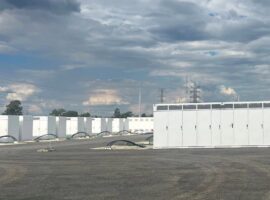The South Australia Liberal government has announced a new energy package to ensure the state can reach its target of net 100 per cent renewables by 2030, including a commitment to fast-track a new transmission line to NSW and allowing the market operator to effectively switch off rooftop solar to protect the grid.
The new South Australia Energy Plan has been prompted by new analysis by the Australian Energy Market Operator, which suggests that the growing amount of rooftop solar will mean that the state grid could experience “zero operational demand” within the next one to three years – much earlier than expected – and it needs to be able to “shed” rooftop solar on rare occasions to avoid the risk of a state-wide blackout.
The AEMO report says that South Australia is the first gigawatt scale power system in the world to approach zero operational demand due to the growth of distributed resources. This had been expected to occur by 2025, but the increasing growth of rooftop solar – now around 200MW a year – means it could happen much earlier, with big risks to the grid if not properly managed.
It is particularly concerned about the ability of South Australia to operate as an “energy island” – as occurs when the main link to Victoria is lost – and wants to introduce a “back-stop” measure that allows it to manage up to 500MW by this coming spring.
Rooftop solar is the obvious choice until other major loads – hot water etc – or new storage can be introduced as a “solar soak”, or the new link can be built by 2023.
AEMO says new smart meter remote energisation capabilities that will apply to newly installed rooftop solar PV – and other measures that could affect already installed PV – means that it could have 1GW of “backstop” that could be shed in an emergency, and until the new link to NSW boosts its security. It says this will be rarely used.
AEMO and state authorities argue that the ability to “shed” rooftop solar should not be controversial, as all other generators need to dial down their output when there is insufficient demand. However, until now, rooftop solar has been considered a “must run” source of generation, largely because much of its output is invisible (consumed in the home) and till now cannot be controlled.
The South Australia government says that rather than trying to block new solar installations, it is responding by fast-tracking new standards that will allow AEMO to exert that control over the growing amounts of rooftop solar, and household batteries, and ensuring that the new link to NSW gets built on time.
“The South Australian government will demonstrate genuine leadership by achieving net 100 per cent renewable energy through an orderly transition which delivers economic growth and competitive power prices for South Australian homes and businesses,” energy minister Dan van Holst Pellekaan said in a statement.
The decision to fast-track the $1.5 billion Project EnergyConnect line from Robertstown and Wagga Wagga, rather than waiting for a laborious regulatory review to be completed, means that South Australia will become the third state forced to “go it alone” on major infrastructure investments out of frustration with Australia’s energy regulatory regime, which is being branded as no longer fit for purpose.
South Australia already sources more than 55 per cent of its electricity supply from local wind and solar – a record high for the world and a significant achievement given its relatively weak connection to the rest of the Australian grid.
The new 800MW link to NSW is considered essential to create a bigger market for the state’s growing wind and solar resources and to support the grid as it heads towards the goal of net 100 per cent renewables, which the state Liberal government says it wants to reach before 2030.
AEMO says the new link is essential. The regulator has already given in-principle support to the project, but there are yet more regulatory processes to follow and the state government is concerned that its strict “economic” tests might not grasp its importance to grid security.
The new report from AEMO has forced the state government to step in, and means it cannot wait for the laborious regulatory process – a common complain about the failure of Australia’s regulators to keep up with the rapidly changing nature of energy technology, particularly the shift towards what AEMO describes as a “distributed, digital and democratised” grid through rooftop solar, battery storage and electric vehicles.
“Without it (Project Energy Connect), South Australians face unacceptable power system security risks, a moratorium on new rooftop solar, as well as expensive interventions to bolster the grid and retrofit existing solar house by house,” van Holst Pellekaan says.
To deal with this, South Australia will also fast-track the introduction of new standards that will enable AEMO to exert some control over rooftop solar systems, this includes upgrading inverter standards that means rooftop solar and battery storage can be both observed, managed controlled.
The state government is also providing $10 million to South Australia Power Networks to upgrade its voltage management. This is to help deal with the problems identified in the new AEMO analysis which points to the risk of up to 400MW of rooftop solar in the Adelaide region being disconnected by voltage disturbances.
It also flags new constraints on the Heywood inter-connector, the main link between South Australia and Victoria – to reduce system risk until the new link is completed. It involves reducing the amount of imports into the state, particularly at times of high rooftop solar production.
And AEMO will also be given power to “switch off” rooftop solar if it deems it necessary to maintain security on the grid. These powers, foreshadowed in various regulatory reviews and work on distributed energy roadmaps, will be fast-tracked for South Australia.
The South Australia government is the third state government to vent frustration with Australia’s complex and laborious regulatory process, with both the Victoria and NSW governments opting to go their own way on much needed network infrastructure.
Of course, the previous South Australia Labor government also went out on its own after voicing frustration at load-shedding in February 2017, when the state’s most modern gas generator sat idle as a combination of a heat wave, generator failures and a network software error caused tens of thousands of customers to have their power cut off.
That energy security plan led to the construction of the Tesla big battery at Hornsdale, still the world’s biggest lithium-ion battery in the world and about to be expanded, and another back-up plan to install emergency diesel generators. These are now being leased to renewable energy companies and being converted to fast-start gas generators to “firm” the output of wind and solar.
The Clean Energy Council says it welcomes the South Australian government’s commitment to 100 per cent renewable energy and the acceleration of a range of reforms to better prepare and integrate these technologies into the energy system.
“The South Australian Government has recognised the incredible success of renewable energy to date, and has now set a firm plan for getting to 100 per cent renewable energy,” CEO Kane Thornton said in a statement. “This is the future, and the Clean Energy Council looks forward to working with the South Australian Government to make this a reality.
Thornton said the Project EnergyConnect had been burdened by a regulatory process and RIT-T (regulatory investment test) that is no longer fit for purpose,.
The plan also recognises the importance of leveraging smart technology built into solar power systems. By updating regulations and standards to catch up with the latest technology developments, South Australia can ensure that rooftop solar better supports the grid and empowers customers to manage their power better and reduce energy bills.
Thornton also said that many of the measures proposed by the South Australian Government echo those outlined in the Clean Energy Council’s Distributed Energy Resources (DER) Roadmap in September 2019.
“We need to change the way that we manage solar and battery systems and how they interact with the grid,” said Thornton. “New rules are required to mandate technological capability and new markets to make the best use of the capabilities already at our disposal.

